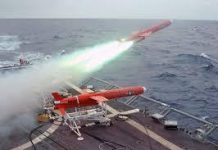
Earlier this year, the F-35 fighter jet faced criticism from several European countries—including Germany, Switzerland, and France—over allegations that the aircraft was fitted with a so-called “kill switch.” According to these claims, this feature could potentially disable some of the jet’s advanced systems, which are central to its technological superiority. Lockheed Martin, the manufacturer, strongly denied these allegations, which European officials never substantiated.
Germany was one of the loudest critics of this rumored feature. Ironically, the country is now planning to expand its fleet by ordering 15 more F-35s on top of the 35 already purchased, bringing the total to 50 units. This update was reported by Military Watch Magazine, which stated that Germany’s Ministry of Defense “intends to increase its order of fifth-generation F-35A fighters from 35 to 50 and is currently negotiating a follow-up contract with the United States.”
This shift raises an obvious question: Why would one of the program’s strongest critics now seek additional aircraft? The answer once again points to Russia. While Berlin initially criticized Washington over the alleged kill switch—citing concerns amid tensions linked to Ukraine—the renewed interest in the F-35 is driven by escalating security threats from Moscow, particularly after the war in Ukraine and NATO’s call for stronger combat readiness.
Germany originally chose the F-35 to replace its aging Panavia Tornado fleet. The additional jets would significantly boost the Luftwaffe’s capabilities for both nuclear deterrence and conventional missions, aligning with NATO’s evolving requirements. Although negotiations with the U.S. have not been officially confirmed, Chancellor Friedrich Merz appears to favor a pragmatic approach: while promoting European defense autonomy, he recognizes the F-35 as the fastest and most reliable solution for Germany’s immediate security needs, given that European alternatives are still years away from deployment.
However, increasing reliance on the F-35 poses challenges for Europe’s Future Combat Air System (FCAS)—a joint sixth-generation fighter project by Germany, France, and Spain. The first FCAS demonstrator flight is not expected before 2028, and the full system may not be operational until around 2040. This delay, combined with budgetary and political disputes between Berlin and Paris over workshare, has fueled concerns that a larger F-35 investment could undermine both funding and political support for FCAS.
Despite these worries, Germany maintains that the F-35 is a temporary measure to bridge the gap until FCAS is ready. Upcoming discussions—such as those between Merz and French President Emmanuel Macron, and a planned July 2025 meeting between German Defense Minister Boris Pistorius and U.S. Defense Secretary Pete Hegseth—will be critical in striking a balance between strengthening NATO defenses and preserving Europe’s long-term strategic autonomy.
Why does Germany Want F-35s
The Lockheed Martin F-35 Lightning II represents the cutting edge of modern air combat technology. Combining stealth, adaptability, and advanced networking, it serves as more than a fighter jet—it is a key platform for 21st-century warfare.
Originally developed under the Joint Strike Fighter (JSF) program in the 1990s, the F-35 was designed to replace a range of older aircraft including the F-16, F/A-18, and AV-8B Harrier. Lockheed Martin’s X-35 prototype beat Boeing’s X-32 in 2001, and the first F-35A flew in 2006. Since then, the aircraft has undergone continuous upgrades, making it the most advanced fifth-generation fighter in service today.
The F-35 comes in three variants:
- F-35A: Conventional takeoff and landing (CTOL) version, widely used by air forces worldwide.
- F-35B: Short takeoff/vertical landing (STOVL) variant for operations from limited runways and carriers.
- F-35C: Carrier-based version with larger wings and reinforced landing gear for naval use.
All versions share core systems, reducing maintenance costs. Each incorporates cutting-edge stealth technology—low radar cross-section, radar-absorbing materials, and internal weapon bays—allowing penetration of highly defended airspace undetected.
Beyond stealth, the F-35’s true power lies in its sensors and data fusion capabilities. Equipped with an AESA radar, distributed aperture system, and electro-optical targeting system, it offers 360-degree situational awareness. Its secure communications enable real-time data sharing with allied forces, effectively making the F-35 the “quarterback” of modern air combat. This connectivity is vital for NATO’s integrated defense strategies.
The fighter can perform multiple roles—air superiority, precision strikes, electronic warfare, and reconnaissance. With an internal payload of AIM-120 missiles and JDAM bombs, plus external hardpoints for additional weapons, it can carry up to 22,000 pounds of ordnance. Ongoing Block 4 upgrades will add new weapons, nuclear capability (B61-12), and advanced electronic warfare tools.
Powered by the Pratt & Whitney F135 engine, the F-35 reaches Mach 1.6 and sustains up to 9G maneuvers. The F-35B’s unique lift fan system enables vertical landings, while the F-35C offers extended range for carrier operations.
Despite its strengths, the F-35 program has faced scrutiny for high costs—over $400 billion for development and production—and maintenance expenses projected at $1.1 trillion over 50 years. It has also faced software and logistics challenges, though the transition from ALIS to ODIN aims to improve sustainment.
With more than 1,000 units delivered and active in combat, the F-35 continues to attract global buyers. Over 20 nations—including Germany, Finland, and the Czech Republic—have joined the program, reinforcing its role as the backbone of allied air power.
Future upgrades will integrate artificial intelligence, autonomous operations, and enhanced sensors, ensuring the F-35 remains dominant well into the mid-21st century. It is not merely a fighter jet—it is a force-multiplying network node, crucial for modern joint and coalition warfare.





